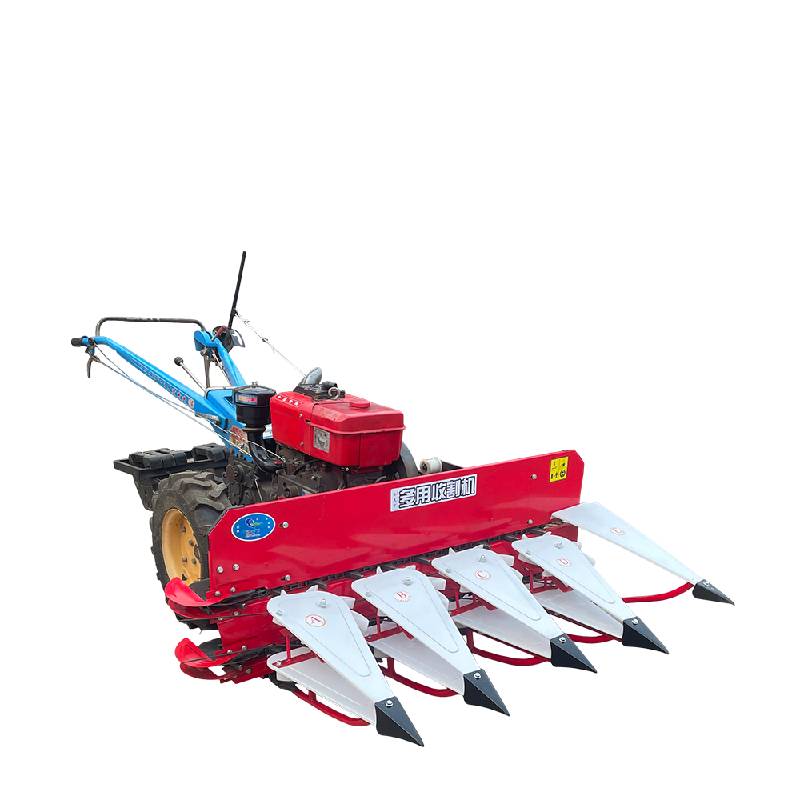Efficient Solutions for Modern Forage Harvesting Equipment and Techniques
The Forage Harvester Machine Revolutionizing Modern Agriculture
In the ever-evolving field of agriculture, the forage harvester machine stands out as a remarkable piece of machinery that has transformed the way farmers manage and harvest forage crops. Forage crops, including grasses and legumes, are essential for livestock feed, and the efficiency with which they are harvested directly impacts the productivity and profitability of farming operations. This article explores the various aspects of forage harvester machines, including their functionality, benefits, advancements, and their significance in sustainable agriculture.
Functionality of Forage Harvesters
Forage harvesters are specialized machines designed to chop and collect forage crops in a single, efficient operation. Typically mounted on tractors or available as self-propelled units, these machines are equipped with powerful cutting blades that sever the plants at their base. The cut forage is then processed through a series of components that chop, blow, and convey the material into a storage vehicle, such as a silage wagon or a truck. The entire process occurs rapidly, allowing farmers to save valuable time and labor, particularly during the crucial harvesting period.
The machinery’s design includes features such as adjustable cutting heights, different cutting widths, and advanced conditioning rollers to prepare the forage for fermentation. Furthermore, modern forage harvesters often come with programmable settings and sensors that optimize the cutting process, ensuring that the forage is harvested at the ideal moisture content for storage.
Benefits of Using Forage Harvesters
The introduction of forage harvester machines has ushered in numerous benefits for farmers and the agricultural sector as a whole. One of the primary advantages is increased efficiency. Traditional methods of harvesting forage, which often involved manual labor and simpler machinery, are labor-intensive and time-consuming. Forage harvesters, however, streamline the process, allowing farmers to cover larger areas in less time.
Moreover, forage harvesters help maintain the quality of the harvested material. With precision cutting and immediate chopping, the forage undergoes minimal degradation, preserving its nutritional value. This is crucial for livestock feed, as the quality of the forage directly affects animal health and milk or meat production.
Additionally, these machines enhance the flexibility of harvesting operations. Farmers can adapt to changing weather conditions and market demands by swiftly responding to the readiness of their crops. This responsiveness is a vital component of modern, competitive farming.
forage harvester machine

Advancements in Technology
The forage harvester industry has seen significant technological advancements in recent years. Many machines now feature GPS-guided systems that improve accuracy during field operation, reducing overlap and ensuring efficient use of resources. Moreover, the integration of data management systems allows farmers to monitor their harvesting operations in real time, facilitating better decision-making concerning crop management and logistics.
Automated systems in some modern forage harvesters can monitor the crop's characteristics and adjust settings accordingly, optimizing performance without requiring constant operator adjustments. This not only enhances efficiency but also reduces the skill level needed to operate the machinery, making it accessible to a broader range of farmers.
Sustainability and Environment
As the agricultural sector faces increasing scrutiny regarding its environmental impact, forage harvesters play an integral role in fostering sustainable farming practices. By allowing for the precise harvesting of crops, these machines minimize waste and promote better management of resources. Efficient forage harvesting can also lead to improved soil health, as farmers can incorporate cover crops and crop rotation practices more effectively, enhancing biodiversity and reducing soil erosion.
Furthermore, by enabling farmers to produce high-quality forage crops, these machines contribute to reducing the need for supplementary feeds, which often have a higher carbon footprint due to transportation and processing.
Conclusion
The forage harvester machine represents a significant leap forward in agricultural technology, enabling farmers to harvest crops more efficiently while maintaining quality and promoting sustainable practices. As technology continues to advance, we can expect to see even greater improvements in the capabilities of forage harvesters, further solidifying their role as an indispensable tool in modern agriculture. The ongoing evolution of this machinery will not only enhance farm productivity but also contribute positively to global food security and agricultural sustainability.
Latest news
-
When to Upgrade Your Old Forage HarvesterNewsJun.05,2025
-
One Forage Harvester for All Your NeedsNewsJun.05,2025
-
Mastering the Grass Reaper MachineNewsJun.05,2025
-
How Small Farms Make Full Use of Wheat ReaperNewsJun.05,2025
-
Harvesting Wheat the Easy Way: Use a Mini Tractor ReaperNewsJun.05,2025
-
Growing Demand for the Mini Tractor Reaper in AsiaNewsJun.05,2025







